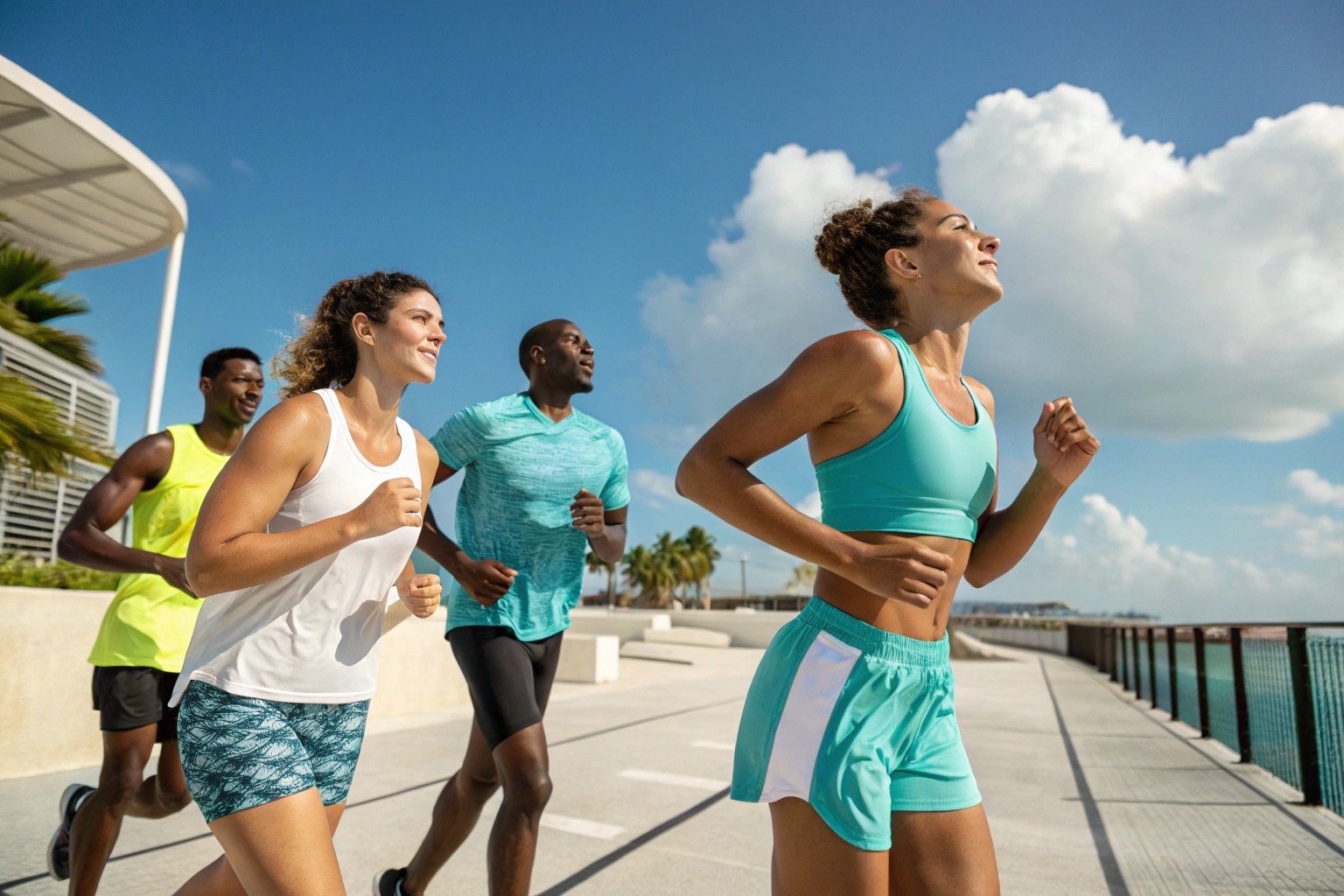Whether you’re producing athleticwear, uniforms, or summer garments, one factor remains critical: how well the fabric handles sweat. In hot climates or under physical strain, moisture management isn't just a comfort issue—it’s about performance, skin health, and product quality. But not all fabrics are built for the heat.
The best fabrics for moisture management in heat are polyester blends, nylon mesh, bamboo viscose, and Tencel™—each engineered or derived to offer quick-drying, breathable, and sweat-dispersing properties. These fabrics move sweat away from the body and help keep users cooler and drier for longer.
Let’s dive into how each material performs, and how you can source moisture-wicking fabrics efficiently for your warm-weather product lines.
Why Is Moisture-Wicking Critical for Hot-Weather Wear?
We’ve all worn the wrong shirt on a hot day—it sticks, chafes, and makes you overheat. For garment designers, this creates a challenge: choosing fabrics that keep skin dry and minimize sweat buildup in high temperatures.
Moisture-wicking fabrics use capillary action to pull sweat away from the skin and disperse it across a larger surface area for faster evaporation.
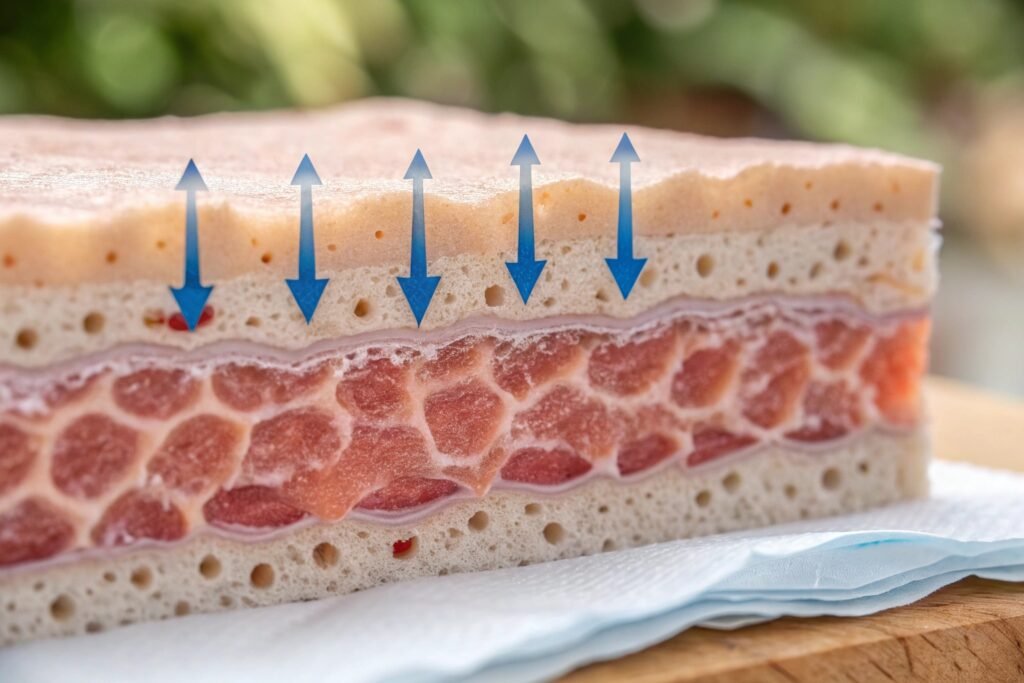
How Does Moisture Management Work?
Moisture-wicking performance depends on two things: absorption and release. Fabrics like Coolmax or performance polyester don’t absorb moisture like cotton. Instead, they transport it to the surface, where it evaporates. This keeps the user feeling dry and regulates body temperature.
Our testing lab in Keqiao measures this using the moisture management test (MMT) and drying time scores. Materials like microfiber polyester score highest in drying efficiency—ideal for sportswear and outdoor uniforms.
Why Do Buyers Prefer Moisture Control Features?
Modern consumers demand performance. Brands that offer clothing engineered for heat gain higher customer satisfaction and lower return rates. Moisture-wicking fabrics also improve hygiene, reducing odor-causing bacteria buildup.
Which Synthetic Fabrics Offer the Best Sweat Control?
Synthetics dominate the activewear market for good reason. They’re light, durable, and when engineered correctly, dry quickly.
The most effective synthetic fabrics for sweat control include polyester, nylon, and their blends—especially when treated or structured for breathability.
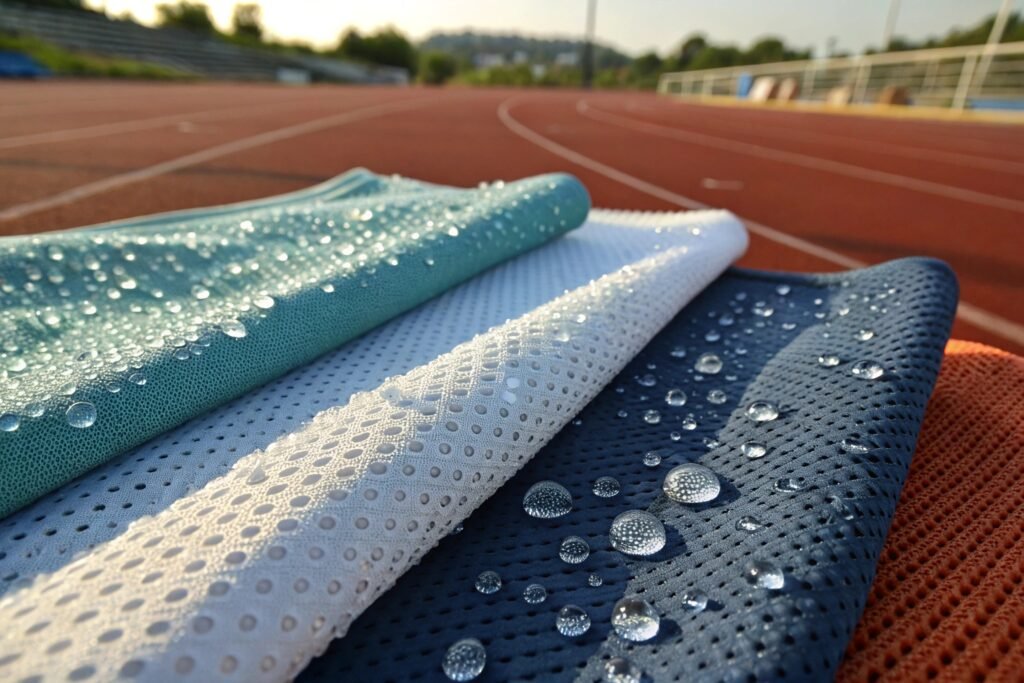
Is Polyester Still the Top Choice?
Yes, particularly for mass-market performance apparel. At Fumao, we produce over 1000 variations of polyester jerseys, interlocks, and mesh fabrics designed specifically for moisture transport. Our solution-dyed variants also resist UV degradation and retain performance after dozens of washes.
Brands like Under Armour and Nike Dri-FIT use modified polyesters with cross-sections that enhance sweat dispersion. We replicate similar profiles with low MOQ for small brands.
What About Nylon and Spandex?
Nylon offers slightly better cooling and feel than polyester but tends to absorb more water. Blending nylon with spandex improves stretch and recovery, ideal for yoga or compression wear. However, nylon may require additional treatments to match polyester’s drying rate. Our lab applies wicking finishes to enhance moisture management without altering hand-feel.
Can Natural or Eco Fabrics Also Manage Heat Well?
Synthetics perform well, but some buyers prefer sustainable or plant-based options. Thankfully, innovations in regenerated cellulose have closed the gap between eco and performance.
Natural and eco-derived fabrics like bamboo viscose, Tencel™ (lyocell), and modal offer impressive sweat control while appealing to sustainability-focused markets.
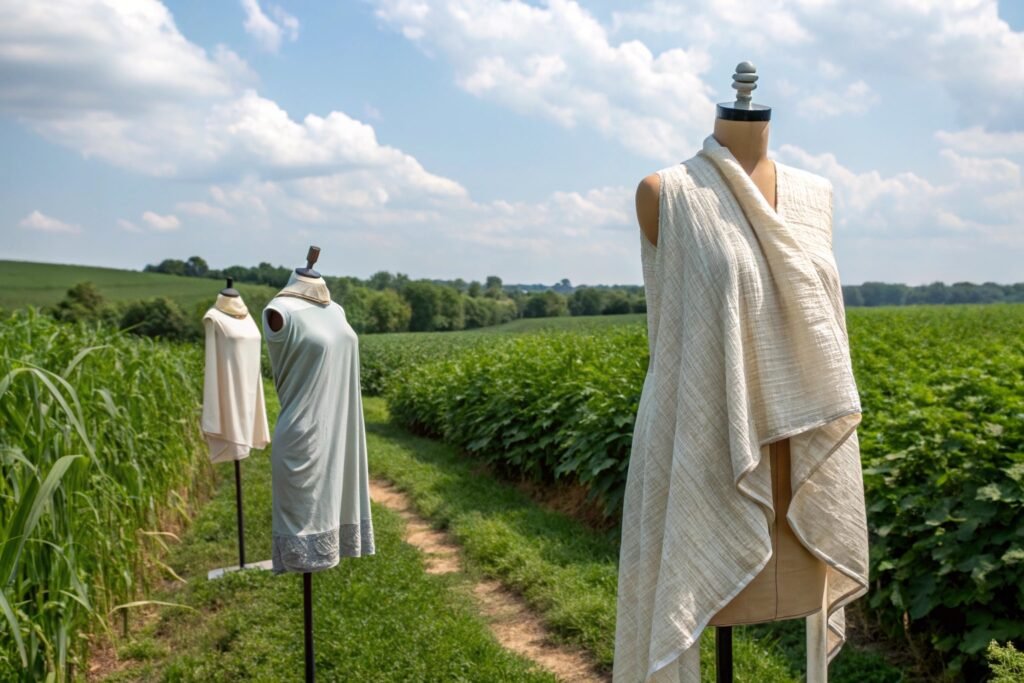
How Does Bamboo Perform in Heat?
Bamboo viscose is ultra-soft and naturally breathable. It absorbs moisture without becoming clingy, then releases it quickly. It’s hypoallergenic and a favorite for underwear and babywear. You’ll find bamboo in Boody and Thought Clothing, both of which emphasize natural comfort in summer.
Our BAMSILK™ bamboo range uses closed-loop processes to ensure low water and chemical impact. These fabrics pass EU Reach standards and come in knit or woven formats.
What’s Special About Tencel™ and Modal?
Tencel™ lyocell and modal are made from wood pulp and offer silky texture with excellent cooling. Tencel™ has higher moisture regain than cotton, but it dries faster due to fiber shape. Brands like Allbirds and Tentree use it for sustainable active and travel wear. At Fumao, we offer certified Tencel™ blends combined with poly or spandex for stretch and structure.
How Should Fabric Structure Affect Moisture Performance?
Fabric construction matters as much as fiber type. A polyester mesh breathes better than a dense woven nylon—even if both are moisture-wicking.
Open-structured knits like mesh and piqué promote airflow and speed up sweat evaporation, making them ideal for extreme heat.
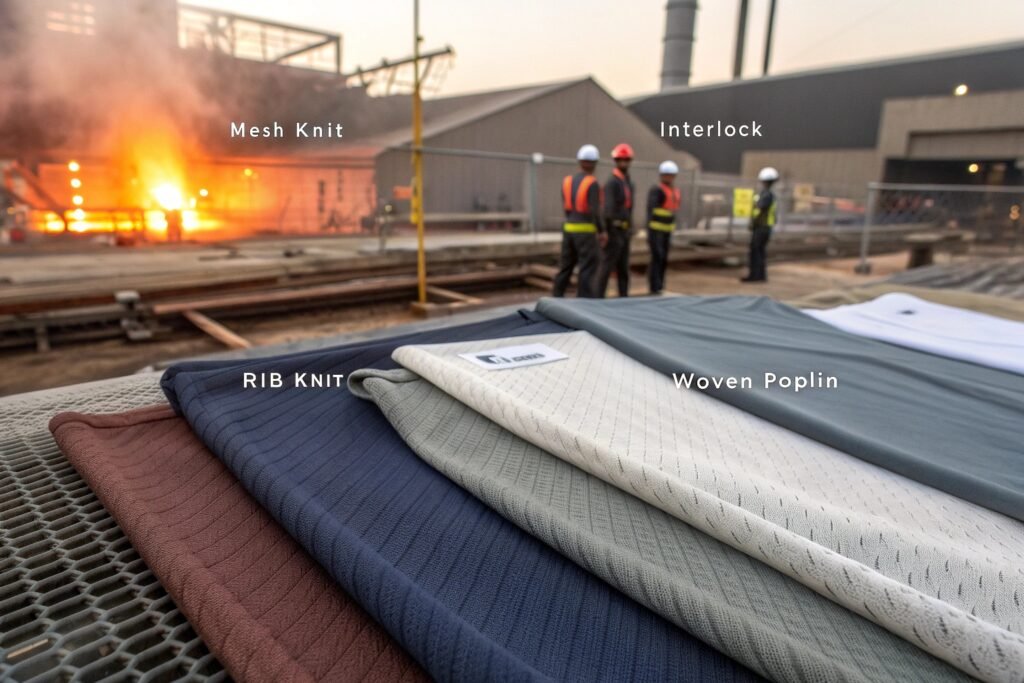
What Are the Best Knits for Hot Climates?
Weft knits like jersey, mesh, and rib knit offer great movement and airflow. Our Fumao mesh series is engineered with micro-pores that amplify capillary movement and reduce heat buildup. These fabrics are used in sports jerseys and summer work uniforms, balancing comfort and strength.
Warp knits like tricot also perform well when lightweight. They resist snagging and are used in linings or underlayers. Learn more about warp vs. weft to choose the right build for your garments.
Do Woven Fabrics Work for Heat?
Yes—if lightweight and structured correctly. For example, poplin, voile, or gauze cotton can offer breathable coverage in fashion garments. However, woven fabrics usually lack stretch and dry slower. That said, we offer ultra-light Tencel-cotton blends with air-permeable coatings that pass both breathability and water vapor transmission tests.
Conclusion
If your product lines serve warm or tropical climates, prioritizing moisture management isn't optional—it’s essential. Whether you choose synthetic jerseys for sportswear, bamboo viscose for underwear, or Tencel for eco-conscious summerwear, the right fabric makes your customer feel cooler, drier, and more satisfied. At Fumao, we combine advanced lab testing, vertical production, and international sourcing knowledge to help you pick the right heat-ready fabric for your market. Don’t let sweat ruin your design—choose fabrics built for performance.

